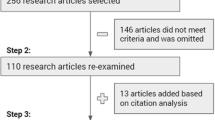Abstract
Enterprise applications may be classified into management applications used by managerial staffs for making decisions on business operations, and engineering applications used by engineers for solving multidisciplinary design problems. In the literature, enterprise application integration is extensively addressed in the context of management applications, but insufficiently discussed in the engineering disciplines. Practitioners in manufacturing industries have for a long time feel the increasing need of integrating engineering applications, in order to accelerate product development paces and improve design qualities. Integrating engineering applications used in the multiple engineering disciplines has to cope with a number of challenges. This paper focuses on one of the critical issues: parameter mapping and data transformation, which is of pivotal importance to integrating engineering applications. Design parameter mapping provides a consistent approach to data extraction, storage, display and manipulation among different data sources. Data transformation describes the operational logic of parsing input/output files, extracting and transforming data, and maintaining consistency among multiple data sources.






Similar content being viewed by others
References
Arian, E. (1997). On the coupling of aerodynamic and structural design. Journal Of Computational Physics, 135(1), 83–96.
Bos, A. H. W. (1998). Aircraft conceptual design by genetic gradient-guided optimization. Engineering Applications of Artificial Intelligence, 11(3), 377–382.
Dobre, A., Hakimpour, F., & Dittrich, K. R. (2003). Operators and classification for data Mapping in semantic integration. Lecture Notes in Computer Science, 2813, 534–547.
Erasala, N., Yen, D. C., & Rajkumar, T. M. (2003). Enterprise application integration in the electronic commerce world. Computer Standards & Interfaces, 25(2), 69–82.
Hou, H., Xu, S., & Wang, H. (2007). A study on X party material flow: the theory and applications. Enterprise Information Systems, 1(3), 287–299.
Hough, J., Haines, R., & Giacomo, S. (2007). Contextual factors affecting the integration of enterprise systems in post-merger oil and gas companies. Enterprise Information Systems, 1(4), 421–441.
Houstis, E. N., et al. (2002). GauTurbnLab: a multidisciplinary problem solving environment for gas turbine engine design on a network of nonhomogeneous machines. Journal of Computational and Applied Mathematics, 149(1), 83–100.
Hsu, C., & Wallace, W. (2007). An industrial network flow information integration model for supply chain management and intelligent transportation. Enterprise Information Systems, 1(3), 327–351.
Hwang, H. Y., Jung, K. J., Kang, I. M., Kim, M. S., Park, S. I., & Kim, J. H. (2006). Multidisciplinary aircraft design and evaluation software integrating CAD, analysis, database, and optimization. Advance in Engineering Software, 37(5), 312–326.
Irani, Z., Themistocleous, M., & Love, P. E. D. (2003). The impact of enterprise application integration on information system lifecycles. Information & Management, 41(2), 177–187.
Jang, Y. J., Jang, S. Y., Chang, B. M., & Park, J. (2002). A combined model of network design and product distribution planning for a supply network. Computers & Industrial Engineering, 43(1-2), 263–281.
Johannesson, P., & Perjons, E. (2001). Design principles for process modeling in enterprise application integration. Information Systems, 26(3), 165–184.
Kobayashi, T., Tamaki, M., & Komoda, N. (2003). Business process integration as a solution to the implementation of supply chain management systems. Information & Management, 40(8), 769–780.
Li, L. (1999). Proposing an architectural framework of hybrid knowledge-based system for production rescheduling. Expert Systems, 16(4), 273–279.
Li, L. (2006). The effects of information technology implementation on supply chain collaboration. International Journal of Internet and Enterprise Management, 4(2), 118–134.
Mora, S. L., Vassiliadis, P., & Trujillo, J. (2004). Data mapping diagrams for data warehouse with UML. Lecture Notes in Computer Science, 3288, 191–204.
Patnaik, S. N., & Hopkins, D. A. (2000). General-purpose optimization method for multidisciplinary design applications. Advances in Engineering Software, 31(1), 57–63.
Shu, Q., & Wang, C. (2007). A conceptual framework for product lifecycle modeling. Enterprise Information Systems, 1(3), 353–363.
Staley, S., & Warfield, J. (2007). Enterprise integration of product development data: systems science in action. Enterprise Information Systems, 1(3), 269–285.
Vicens, E., Alemany, M. E., Andre, C., & Guarch, J. J. (2001). A design and application methodology for hierarchical production planning decision support systems in an enterprise integration context. International Journal of Production Economics, 74(1-3), 5–20.
Williams, M. E., Consolazio, G. R., & Hoit, M. I. (2005). Data storage and extraction in engineering software using XML. Advances in Engineering Software, 36(11-12), 709–719.
Zhang, H., Kishore, R., Sharman, R., & Ramesh, R. (2007). Agile integration modeling language: a conceptual modeling grammar for agile integrative business information systems. Decision Support Systems, 44(1), 266–284.
Author information
Authors and Affiliations
Corresponding author
Rights and permissions
About this article
Cite this article
Wang, C., Xu, L. Parameter mapping and data transformation for engineering application integration. Inf Syst Front 10, 589–600 (2008). https://doi.org/10.1007/s10796-008-9112-5
Published:
Issue Date:
DOI: https://doi.org/10.1007/s10796-008-9112-5




